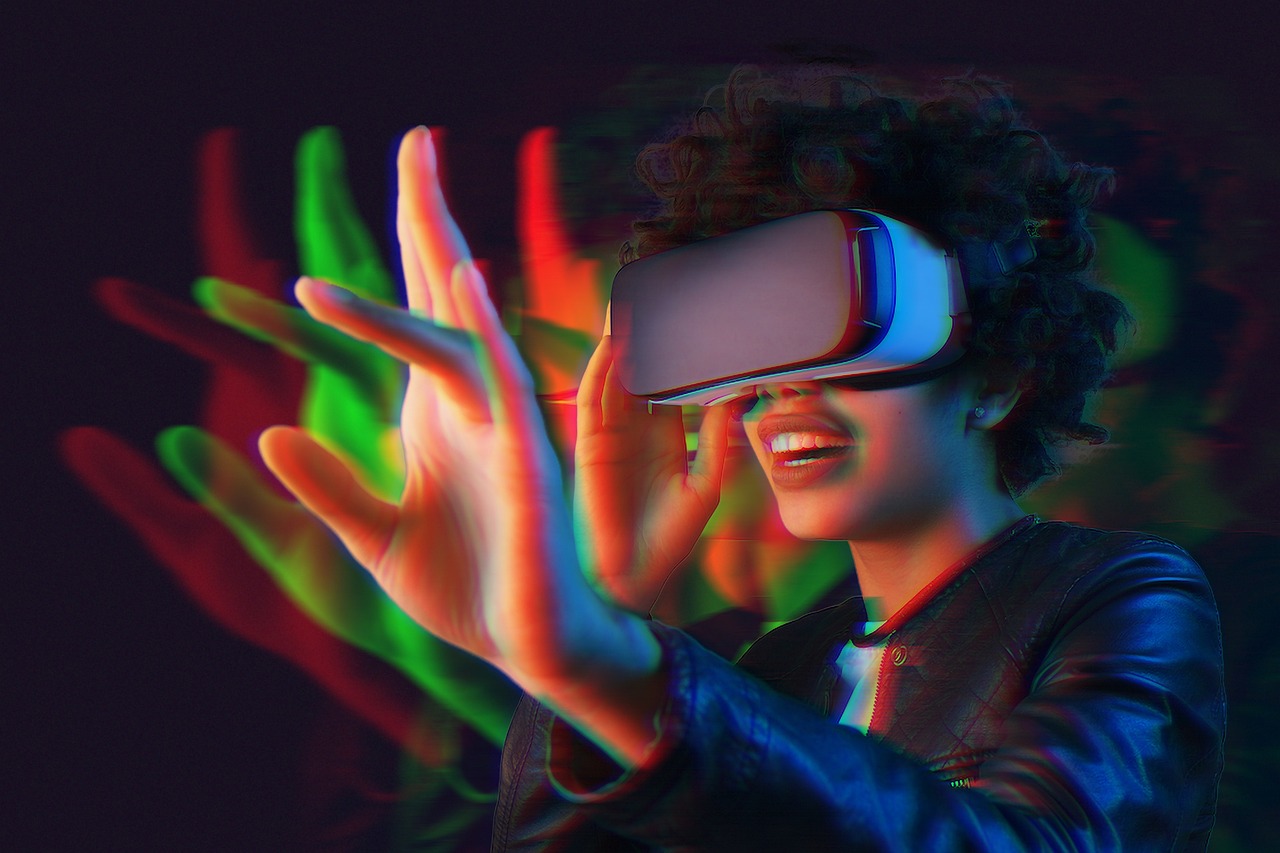Cloud VR or Cloud primarily based Virtual Reality represents large jump forward within the international of immersive technology. By leveraging the power of cloud computing Cloud VR pursuits to triumph over number of the boundaries related to conventional VR structures providing customers extra accessible and effective digital truth experience.
At its core Cloud VR refers to the delivery of digital truth content material and stories via cloud primarily based offerings as opposed to depending totally on local hardware processing. This method has the capability to revolutionize how we engage with digital environments making incredible VR reports available to broader target market.
The importance of Cloud VR in current generation can not be overstated. As we keep to push the boundaries of what is possible in virtual and augmented reality the need for more powerful flexible & available answers turns into increasingly apparent. Cloud VR stands at the vanguard of this technological evolution promising to unencumber new possibilities in fields ranging from amusement and training to healthcare and enterprise.
How Cloud VR Works?

Cloud VR operates on basically distinctive precept in comparison to standard VR systems. Instead of counting on neighborhood hardware to render complicated 3D environments and cope with all of the processing Cloud VR offloads great deal of this paintings to powerful servers in the cloud.
The fundamental workflow of Cloud VR system generally involves the subsequent steps:
- User input is captured through the VR headset or controllers.
- This enter facts is sent to cloud servers over excessive velocity net connection.
- The cloud servers system the enter render the perfect visible and audio output & perform any essential computations.
- The ensuing information is then streamed returned to the consumers tool in actual time.
- The users VR headset displays the streamed content growing an immersive enjoy.
Key Components
Several key additives paintings collectively to make Cloud VR viable:
- Cloud Infrastructure: High performance servers and records centers shape the spine of Cloud VR offering the necessary computing power and garage.
- Low Latency Networks: 5G and other advanced networking technologies are essential for minimizing postpone among user input and visible comments.
- Streaming Protocols: Specialized protocols optimize the transmission of VR content over the net ensuring smooth and exceptional studies.
- Client Devices: While less powerful than conventional VR setups those nonetheless need to decode streamed content and track person actions correctly.
- Content Delivery Networks (CDNs): These help distribute content greater efficaciously throughout geographical locations lowering latency.
Comparison with Traditional VR
Cloud VR differs from traditional VR in numerous key components:
- Hardware Requirements: Traditional VR often calls for effective highly priced nearby hardware. Cloud VR can work with less effective devices as most processing happens inside the cloud.
- Scalability: Cloud VR can extra easily scale to address extra complicated environments or larger numbers of customers restricted only by server ability in place of individual consumer hardware.
- Updates and Maintenance: With Cloud VR updates to content and software can be rolled out centrally with out requiring customers to manually replace their systems.
- Accessibility: Cloud VR has the ability to make great VR studies available on much wider variety of gadgets together with smartphones and decrease end computers.
- Internet Dependency: Unlike traditional VR Cloud VR calls for consistent high speed net connection to function well.
By leveraging the power of cloud computing Cloud VR targets to overcome among the limitations of conventional VR systems paving the way for extra immersive reachable & powerful digital stories.
Advantages of Cloud VR

Cloud VR offers numerous sizable blessings over conventional VR systems making it an attractive option for both customers and builders. Lets discover some of the important thing advantages:
Reduced Hardware Requirements
One of the most tremendous blessings of Cloud VR is the drastically reduced hardware requirements for stop users:
- Lower Entry Barrier: Without the need for excessive give up GPUs and effective processors the price of access for VR reviews is dramatically decreased.
- Device Agnostic: Cloud VR can probably paintings on huge variety of devices from smartphones to lightweight VR headsets increasing the ability consumer base.
- Longer Device Lifespan: As processing happens in the cloud consumer gadgets do not end up out of date as fast extending their useful life.
- Energy Efficiency: Less effective nearby hardware means decreased electricity consumption on the consumers end probably leading to longer battery existence for cell VR reports.
Enhanced Processing Power
Cloud VR leverages the large computational assets of cloud statistics facilities supplying sizeable benefits:
- Superior Graphics: Cloud servers can render great deal greater specific and complex environments than maximum nearby hardware leading to extra visually beautiful reports.
- Advanced Physics Simulations: The improved processing power allows for greater sensible physics simulations enhancing immersion.
- AI and Machine Learning Integration: Cloud resources can guide advanced AI for greater realistic NPCs (non participant characters) and dynamic environments.
- Scalability: Cloud infrastructure can scale up to meet demand taking into consideration more complex and expansive digital worlds.
Improved Accessibility
Cloud VR has the potential to make virtual reality greater available to broader audience:
- Wider Device Compatibility: By reducing hardware requirements Cloud VR can work on broader variety of devices together with older or much less effective ones.
- Instant Access: Users can doubtlessly access brilliant VR reports instantly without the need for large downloads or installations.
- Cross Platform Compatibility: Cloud VR ought to make it easier for customers on special sorts of gadgets to proportion the equal virtual spaces and stories.
- Reduced Physical Space Requirements: As much less nearby hardware is wanted users wont need to devote as good deal physical area to their VR setup.
Simplified Updates and Maintenance
Cloud VR gives advantages in terms of software program control:
- Centralized Updates: Developers can push updates to their applications at the cloud servers ensuring all customers instantly have get admission to to the present day version.
- Reduced User Maintenance: Users dont need to control software program updates or hardware upgrades as often simplifying the person revel in.
- Consistent Experiences: Cloud VR can provide greater steady experiences across unique devices because the center processing takes place on standardized cloud hardware.
Potential for New Use Cases
The particular attributes of Cloud VR open up opportunities for brand new applications:
- Large Scale Collaborative Environments: The scalability of cloud structures could allow for big multiplayer VR reviews.
- Integration with IoT and Smart Cities: Cloud VR could probably combine with smart town infrastructure and IoT gadgets to create big scale augmented reality studies.
- On Demand Specialized Applications: Users could get right of entry to specialised VR packages (like superior CAD software) without having to have effective workstations.
While Cloud VR isnt always with out its challenges these benefits display its potential to significantly impact the VR panorama making immersive stories extra reachable powerful & versatile than ever before.
Challenges and Limitations

Despite its numerous blessings Cloud VR faces numerous huge challenges and obstacles that want to be addressed for massive adoption:
Latency Issues
Latency or the postpone among user enter and the corresponding visible feedback is perhaps the most important venture for Cloud VR:
- Motion Sickness: High latency can cause mismatch among user movements and visual comments probably causing movement sickness or discomfort.
- Reduced Immersion: Noticeable delays can smash the experience of immersion important for compelling VR enjoy.
- Technical Hurdles: Achieving the sub 20ms latency often noted as important for cushty VR is hard whilst factoring in community transmission instances.
- Geographical Limitations: Users further from statistics facilities can also experience better latency creating geographical disparities in carrier first rate.
Bandwidth Requirements
Cloud VR demands great network sources:
- High Data Usage: Streaming notable VR content material calls for full size bandwidth which may not be available in all areas or may also come at high value.
- Network Congestion: Heavy Cloud VR usage should potentially strain community infrastructure mainly in densely populated areas.
- Quality Variability: Fluctuations in available bandwidth should lead to inconsistent visible exceptional or performance.
- Cost Implications: Users may face higher internet costs due to increased information utilization potentially offsetting the savings from decreased hardware requirements.
Privacy and Security Concerns
As with many cloud based offerings Cloud VR raises several privacy and safety troubles:
- Data Collection: The non stop circulate of person interactions and probably sensitive facts (like eye monitoring or body moves) raises privacy concerns.
- Secure Transmission: Ensuring the steady transmission of records between users and cloud servers is crucial to prevent interception or manipulation.
- Server Security: Cloud servers website hosting VR content material and user information become attractive objectives for cyberattacks.
- User Identification: The immersive nature of VR ought to result in greater private and identifiable statistics being gathered raising concerns about anonymity and information protection.
Dependency on Internet Connectivity
Cloud VRs reliance on steady internet connectivity affords numerous challenges:
- Service Interruptions: Any net outage or huge slowdown ought to render Cloud VR offerings unusable.
- Limited Offline Functionality: Unlike traditional VR Cloud VR applications can also have restrained or no functionality with out an internet connection.
- Rural and Remote Access: Areas with poor net infrastructure can be not able to advantage from Cloud VR technologies.
Content Ownership and Digital Rights
Cloud VR introduces new complexities in phrases of content material possession and distribution:
- Digital Rights Management: Streaming VR content raises questions about how to shield intellectual property rights efficaciously.
- Content Availability: Users might not have permanent get admission to to content they have purchased if its only to be had through cloud streaming.
- Regional Restrictions: Content licensing troubles may want to result in local disparities in to be had stories.
Technical Standardization
The emerging nature of Cloud VR technology offers standardization challenges:
- Interoperability: Lack of standardization ought to lead to fragmentation with special structures unable to interact or percentage content material without problems.
- Development Complexity: Developers may also need to create more than one versions in their applications to work across different Cloud VR platforms.
- Quality of Service Metrics: Establishing enterprise wide standards for perfect latency visual high quality & different overall performance metrics is vital.
User Adaptation
Transitioning customers to Cloud VR may additionally present few hurdles:
- Change Resistance: Users accustomed to standard VR systems can be hesitant to exchange to cloud based totally model.
- Learning Curve: While doubtlessly less difficult in few ways Cloud VR might also require users to adapt to new interfaces or service models.
- Trust Issues: Users may additionally have concerns approximately the reliability and consistency of cloud based totally VR reviews as compared to nearby hardware.
While those demanding situations are extensive theyre not insurmountable. As era progresses and greater resources are devoted to Cloud VR development lot of these troubles are possibly to be addressed paving the manner for more vast adoption of this promising technology.
Applications of Cloud VR

Cloud VRs precise competencies open up wide variety of packages throughout various sectors. Here are number of the maximum promising regions wherein Cloud VR is making an impact:
Gaming
The gaming enterprise is at the vanguard of Cloud VR adoption:
- High Fidelity Gaming: Cloud VR can deliver console or PC exceptional video games to wider variety of gadgets along with smartphones and coffee give up computers.
- Massive Multiplayer Experiences: The scalability of cloud structures permits for larger more complicated digital worlds with extra simultaneous players.
- Cross Platform Play: Cloud VR can allow seamless gaming reports across exclusive types of devices.
- Instant Access: Players can potentially start video games instantly with out lengthy down load or set up times.
- Dynamic Content Updates: Developers can roll out updates and new content material greater effortlessly and regularly.
Education and Training
Cloud VR offers powerful new gear for learning and ability development:
- Virtual Classrooms: Students from around the world can collect in immersive digital environments for lectures and collaborative gaining knowledge of.
- Simulated Training: Complex high danger scenarios (like surgical methods or emergency responses) may be practiced properly in VR.
- Interactive Learning: Abstract concepts in technology arithmetic & different fields may be visualized and manipulated in 3 D area.
- Virtual Field Trips: Students can discover historic sites geological formations or even other planets without leaving the study room.
- Accessibility: Cloud VR could make specialized instructional stories available to college students regardless of their place or their schools resources.
Healthcare
The healthcare region is locating modern uses for Cloud VR:
- Telemedicine: Doctors can behavior extra immersive and informative faraway consultations using VR.
- Surgical Planning: Complex surgeries can be deliberate and practiced in exact 3 d fashions of affected person anatomy.
- Mental Health Treatment: VR publicity therapy for phobias or PTSD can be more without difficulty administered and monitored remotely.
- Pain Management: VR distraction therapy for continual pain or at some point of clinical tactics may be greater extensively applied.
- Medical Training: Students and experts can practice processes in sensible cloud primarily based simulations.
Business and Collaboration
Cloud VR is transforming how corporations operate and groups collaborate:
- Virtual Meetings: Teams can gather in immersive digital areas enhancing engagement and verbal exchange in faraway work settings.
- Product Design: Engineers and architects can collaborate on 3D models in real time regardless of their bodily location.
- Virtual Showrooms: Businesses can create distinctive virtual product demonstrations or showrooms reachable from anywhere.
- Training and Onboarding: Companies can create constant immersive schooling studies for personnel across different places.
- Data Visualization: Complex information sets can be explored and analyzed in intuitive three D environments.
Architecture and Real Estate
Cloud VR is changing how we design and enjoy areas:
- Virtual Property Tours: Potential customers or renters can take exact tours of homes from anywhere inside the global.
- Architectural Visualization: Architects can create and percentage immersive models of their designs permitting clients to experience areas earlier than theyre built.
- Urban Planning: City planners can model and check changes to city environments in exact interactive simulations.
- Interior Design: Designers and clients can collaborate on and visualize indoors designs in actual time.
Entertainment and Media
Beyond gaming Cloud VR is impacting different styles of enjoyment:
- Virtual Concerts and Events: Large scale digital activities can be hosted allowing worldwide attendance with out bodily barriers.
- Immersive Storytelling: Filmmakers and artists can create interactive 360 diploma narrative reports.
- Virtual Tourism: Users can discover unique recreations of traveller locations or historical websites.
- Art Galleries and Museums: Virtual exhibitions can make art and artifacts on hand to international audience.
Retail and E trade
Cloud VR is enhancing the net shopping experience:
- Virtual Try Ons: Customers can truly attempt on garments add ons or make up.
- Immersive Product Demonstrations: Complex merchandise can be explored and tested in 3 d digital environments.
- Virtual Store Experiences: Brands can create special digital stores that mimic or enhance the in man or woman shopping experience.
Scientific Visualization and Research
Cloud VR presents new gear for scientific exploration:
- Molecular Modeling: Researchers can visualize and engage with complex molecular systems.
- Weather and Climate Modeling: Scientists can create and explore specified weather simulations.
- Astronomical Visualization: Vast astronomical datasets can be rendered into explorable 3 D environments.
These programs constitute just fraction of the potential makes use of for Cloud VR technology. As the generation matures and will become extra available we are probable to peer even greater revolutionary applications across numerous industries and sectors.








2 thoughts on “Cloud VR: The Future of Cloud Virtual Reality”